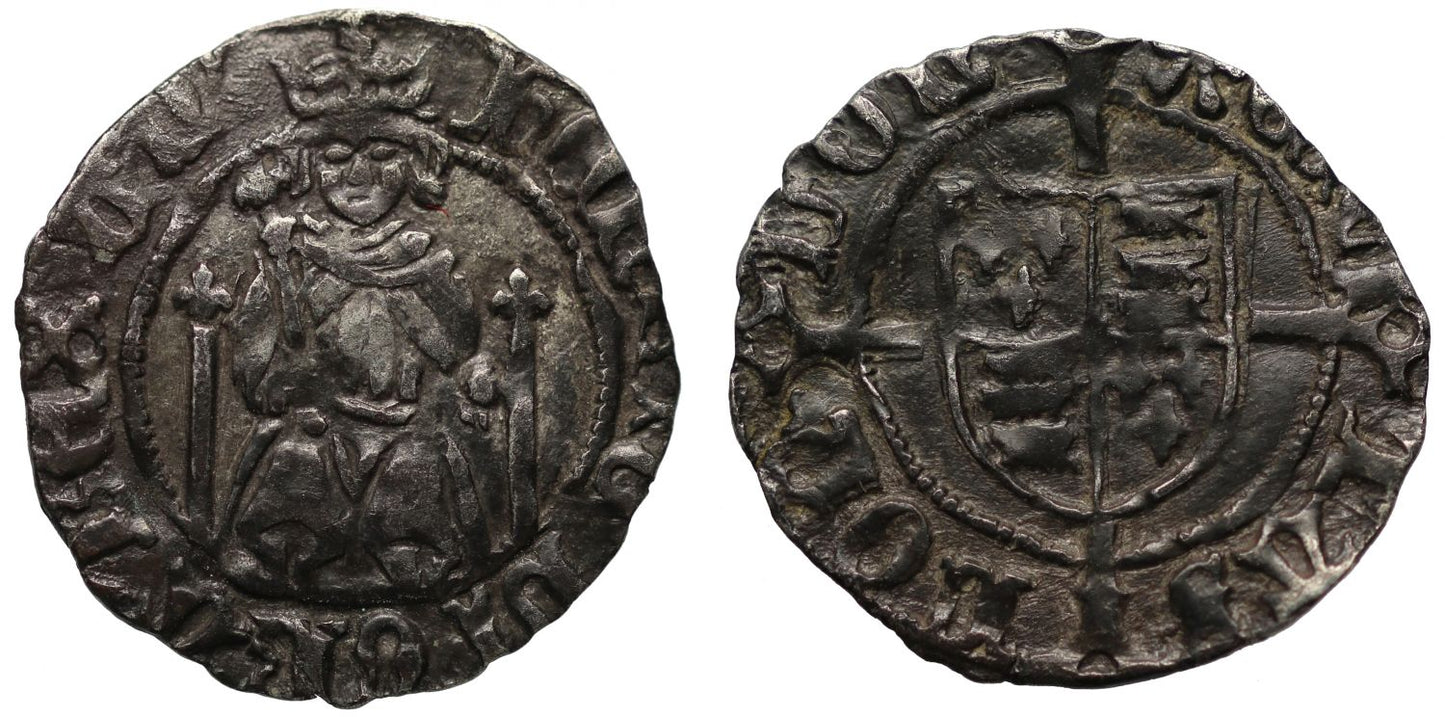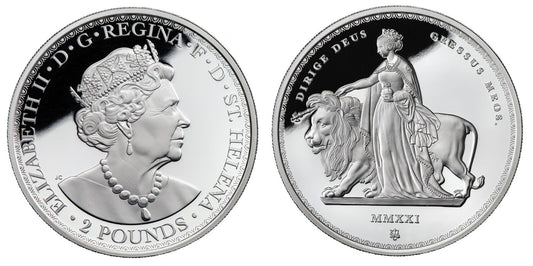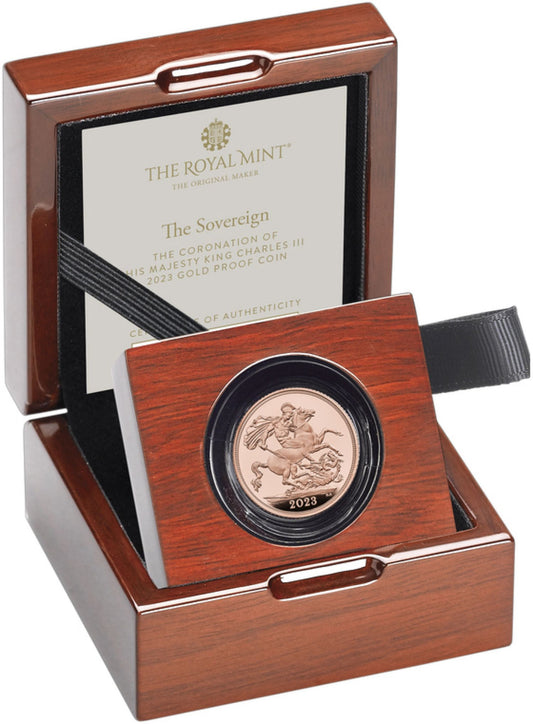FAQs
What makes a coin valuable?
I have coins to sell, what’s the next step?
How will my purchases be shipped?
What happens if I’m not entirely happy with my purchase?
Henry VII Penny, Sovereign type, London Mint, mm pansy on reverse
Henry VII (1485-1509), silver Penny, Sovereign type, London Mint, facing seated figure of King on throne with orb and sceptre, two pillars of throne visible, Latin legend and beaded border surrounding, mint mark pansy on reverse only (1495-98), hEnRIC' DI' GRA' REX' A, rev. long cross fourchee over quartered shield of arms, mitre above shield, D to left, R to right, Latin legend and beaded borders surrounding, *CIVI TAS LON DON, weight 0.73g (SCBI 23:493; N.1726; S.2228). Toned, and just a touch short of flan, details clear and superior to the coin in the sylloge, a bold very fine and rare.
The abbreviated Latin legends translate as on the obverse "Henry, by the Grace of God, King of England" and on the reverse "City of London."
Only one die with the pansy reverse was ever used at London, for further reading see British Numismatic Journal 1996, article "The Classification of Henry VII Sovereign Pence" by Dr Martin Allen listed as type 3ii.
Henry Tudor was born at Pembroke Castle on 28th January 1457 the only child of the 13 year old Margaret Beaufort, who was descended from the Lancastrian branch of the Plantagenet dynasty; and Edmund Tudor the first Earl of Richmond and half-brother of King Henry VI, who died three months before Henry was born rendering him fatherless. Henry spent fourteen years living in exile after Edward IV finally took the throne from Henry VI, living in Britanny under the protection of Duke Francis II. By 1483 Henry was the most senior living Lancastrian as other direct claimants had died, and through his grandfather Owen Tudor, he could trace Welsh heritage back to Cadwaldr the last Ancient British King. His mother Margaret started to actively promote Henry as an alternative to Richard III and Henry was pledged to marry Elizabeth of York at Rennes Cathedral on Christmas Day 1483, the eldest daughter of Edward IV and heir, as her brothers the Princes in the tower had disappeared. After an initial conspiracy from Britanny to oust Richard III was revealed, Henry fled to France to avoid extradition and raised support and an invasion force, which sailed in 1485 and landed at Mill Bay near Dale, Pembrokeshire and marched into England with his uncle Jasper Tudor and John Vere the 13th Earl of Oxford, amassing support and manpower all the way with between 5,000 and 6,000 soldiers. Intending to engage Richard as soon as possible who had reinforcements in Nottingham and Leicester, the two sides met at Bosworth Field on 22nd August 1485 and though outnumbered, Henry's forces proved victorious slaying Richard III and his key allies. Henry declared himself King by right of conquest retroactively from 21st August 1485, the day before the battle so those that fought for Richard could be found guilty of treason, and lands belonging to the same could be confiscated including all of Richards property. Henry spared Richard III's nephew and heir John de la Pole the Earl of Lincoln. Henry's coronation took place at Westminster Abbey on 30th October 1485, whereupon he issued an edict that any gentleman who swore featly to him not withstanding any prior attainder be secure in their property and person. Henry honoured the pledge to marry Elizabeth at York on 14th January 1486 at Westminster Abbey in the hope of uniting the Yorkist and Lancastrian dynasties, as they were both third cousins and great great grandchildren of John of Gaunt. Henry next had parliament repeal the Titulus Regis issued by Richard III that had declared the children of Edward IV illegitimate, therefore legitimising his wife. It was not all plain sailing though as Henry faced several rebellions in the following dozen years, including the rebellion of the Stafford Brothers in 1486, abetted by Viscount Lovell which collapsed before fighting. Then in 1487 that led by the Earl of Lincoln promenading Lambert Simnel who claimed to be the Earl of Warwick, which first ignited in Ireland but was quenched at the Battle of Stoke with Lincoln killed. Henry forgave the Irish nobles involved and gave the boy Simnel a servant job in the Royal kitchen in charge of spit roasting meats. In 1490 another pretender appeared Perkin Warbeck, claiming to be Richard of Shrewsbury winning support of Margaret the Duchess of Burgundy, and attempted invasions of Ireland in 1491 and 1495 and persuading James IV of Scotland to invade England in 1496. In 1497 Warbeck was captured after landing in Cornwall with an invasion force and executed. William Stanley the Chamberlain of the Household was later accused of supporting Warbeck and executed as was the Earl of Warwick in 1499. Henry was otherwise noted for raising money from his subjects and supporters often on the pretext of whatever convenient reason and instead adding to his own coffers, and this attitude toward money to save rather than spend meant he was fiscally prudent as a monarch, stabilising the financial administration and keeping long term trusted financial advisers. Henry was also known for introducing the pound avoirdupois as standard weight and maintained peace overseas as well as the economic prosperity. This was shown numismatically with the introduction of the hammered gold Sovereign as the largest English denomination of the time, issued from 1489, which progressed through five types in this reign as the jewel in the crown of the coinage.
Henry had seven children with Elizabeth of York, three of which died as young children. His eldest son Arthur Prince of Wales died at the age of 15 six months after marrying Catherine of Aragon to whom he had been betrothed at the age of 11, from a "sweating sickness" which his wife also suffered from but survived. Henry was deeply upset at the death of his eldest son in 1502, but even more so, not much later on 11th February 1503 when his wife Elizabeth passed away from a post child birth infection at the age of 37. Henry never did remarry though he had made half-hearted plans to do so for political reasons and he died of tuberculosis on 21st April 1509 at Richmond Palace.
Capital City London upon the River Thames following Roman occupation, minted some of the earliest Saxon coins with gold Thrymsas and silver denarii with a "Londuniu" signature. Mercian Kings beginning with Offa minted coins there, but the first coin to actually say City of London upon it is the unique Ludica portrait Penny that was found in 2016, followed by subsequent coins of Ecgberht. In 871 the Danes wintered in London for the first time but was King Alfred of Wessex who settled and fortified the capital circa 880 to resist further invasions. Edward the Elder incorporated the City in Wessex in 911 and it resisted a major attack in the reign of Aethelred II in 1009. However, London submitted to the Danish Swein in 1013, but three years later the citizens accepted Eadmund Ironside as King and resisted a siege by Canute.
Later unsettled times occurred in the anarchy period of the reign of King Stephen, remaining loyal to the King except for a few months in 1141 when Empress Matilda was admitted but within a short time expelled. Coinage activity here has been mostly constant throughout history from the Romans until the reign of our current Queen and only moving out to Wales from 1969.
Provenance:
Ex Dr John Tooze Collection, Dix Noonan and Webb, Auction 163, 18th September 2019, lot 1093.
Ex Collection of an English Doctor part III, Sovereign Rarities fixed price list online September 2022.
FAQs
What makes a coin valuable?
I have coins to sell, what’s the next step?
How will my purchases be shipped?
What happens if I’m not entirely happy with my purchase?













